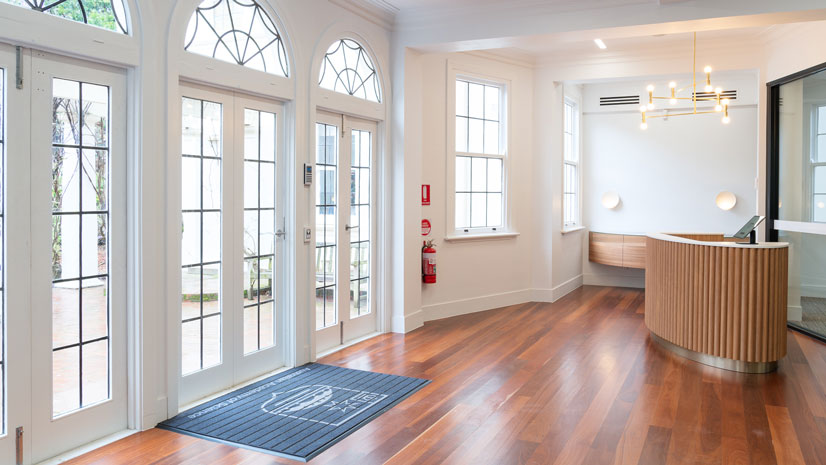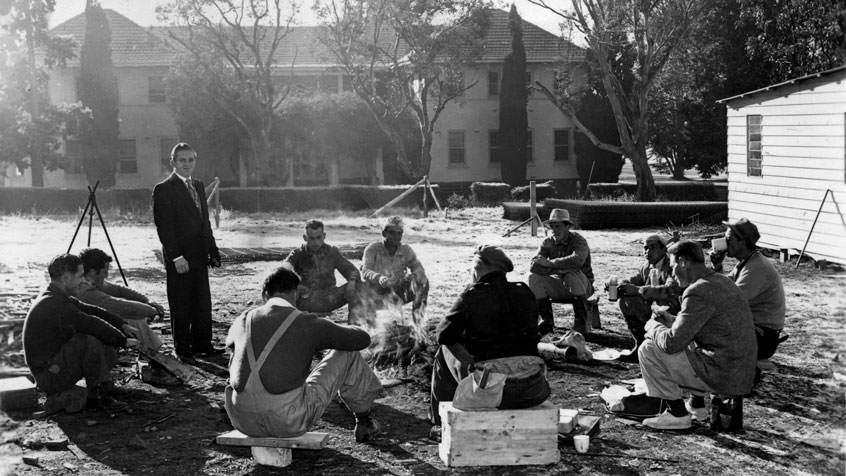
Ian Potter House, the headquarters of the Fellows and staff of the Australian Academy of Science, has officially reopened 989 days after it was extensively damaged during Canberra’s 2020 hailstorm.
It was officially reopened by Academy President, Professor Chennupati Jagadish and Ngunnawal Elder and leader, Aunty Violet Sheridan, following a smoking ceremony.

The opening was attended by Fellows of the Academy and staff, as well as Alicia Payne MP, the Federal Member for Canberra.
Following the 2020 hailstorm, the Academy undertook a complete refurbishment and restoration to improve the building’s accessibility, reduce its environmental footprint and preserve the heritage values of the building, its courtyards and gardens for future generations of Canberrans.

“Ian Potter House has been enhanced to showcase original features such as fireplaces and original ceilings where possible, whilst upgraded to provide a modern and flexible working space that is accessible, sustainable and energy efficient,” Professor Jagadish said in his opening address.
“We hope to have created a beautiful, inspiring, accessible and sustainable home for the Australian Academy of Science, its Fellows and staff.”

Academy of Science Chief Executive, Anna-Maria Arabia, welcomed back Fellows and staff and thanked them for their patience and resilience over this disruptive period.
“I am incredibly proud that we have been able to refurbish Ian Potter House, and to restore a building that holds a special place in Australia’s history and that will contribute to our future,” Ms Arabia said.
Both of the Academy’s historic buildings were significantly damaged in the 2020 hailstorm. The organisation also had the task of restoring the adjacent heritage-listed Shine Dome, including a completely new copper roof and improved energy efficiency. The Canberra landmark was officially reopened in June.
Built as part of the Federal Capital Commission’s building program for the transfer of public servants to Canberra in 1927, the building now known as Ian Potter House represents an early phase in Canberra’s developing social and cultural history.
The Australian Academy of Science took possession of the site in 1985 and, following refurbishment in 1986–87, gave the building its current name in recognition of philanthropist and Academy Fellow, Sir Ian Potter FAA.

The modern restoration received a generous donation from the Ian Potter Foundation, contributing $500,000 to the works.
“Sir Ian and the Foundation have a long history of association with the Academy and with Ian Potter House,” Craig Connelly, CEO of the Ian Potter Foundation, said at the opening.
“The Foundation’s support of the refurbishments of Ian Potter House was a no-brainer.”

As a significant example of the Inter-War Georgian Revival style of architecture, Ian Potter House was entered in the ACT Heritage Register in 1998.
The building, including its courtyards, grounds and wisteria plants which grow over the entrance, are to be conserved and maintained in a manner consistent with its heritage significance.
Learn more about the history of Ian Potter House.
Information and images for this story were sourced from the Academy’s Basser Library and Fenner Archives, which hold a rich historical collection documenting the history of science in Australia. The archives are open to the public by appointment.
© 2025 Australian Academy of Science